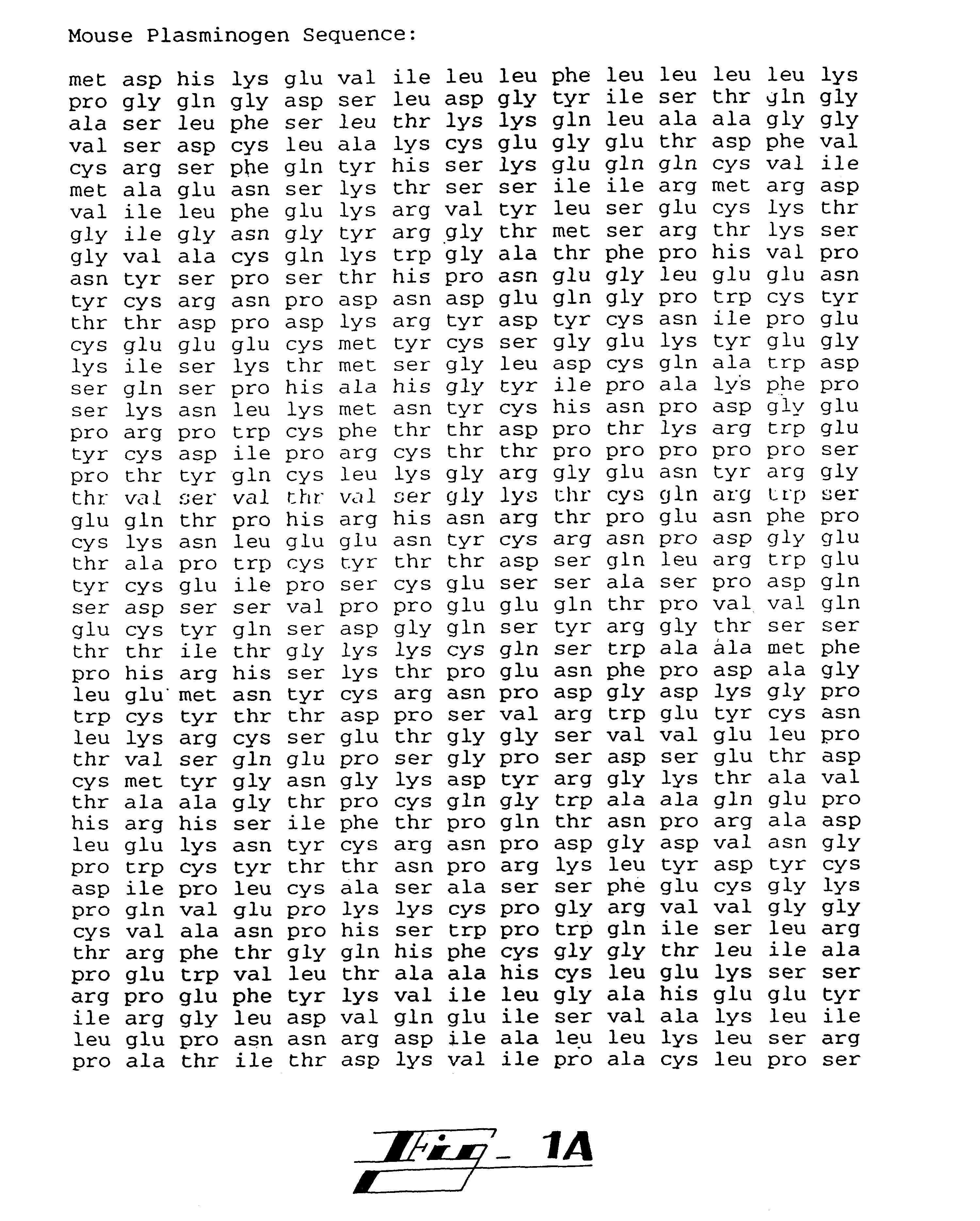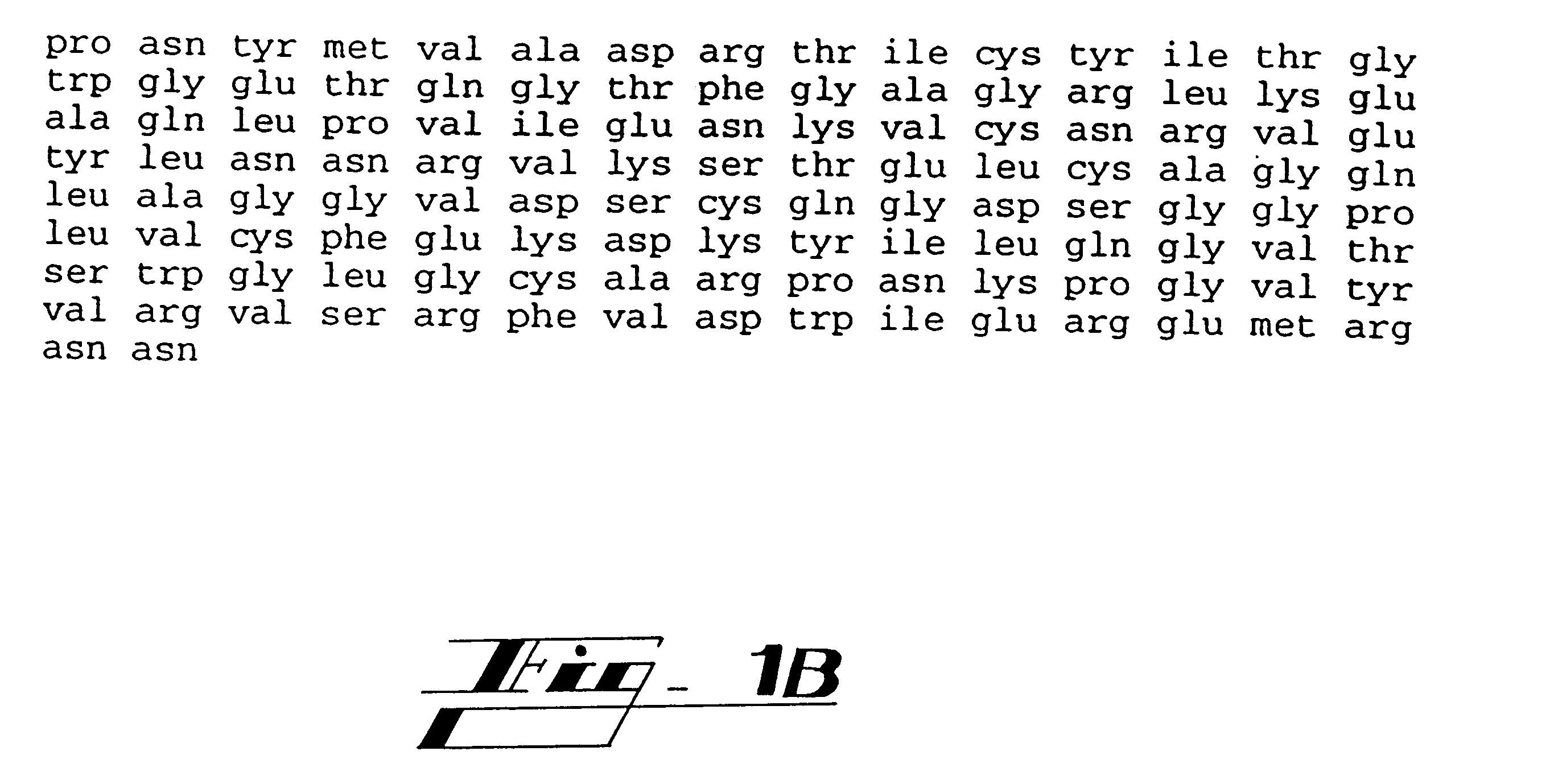Nucleic acids encoding plasminogen fragments
a technology of plasminogen and nucleic acids, which is applied in the field of endothelial inhibitors, can solve the problems of increasing the risk of metastasis and the thickness of the lesion, and achieve the effect of minimal side effects
- Summary
- Abstract
- Description
- Claims
- Application Information
AI Technical Summary
Benefits of technology
Problems solved by technology
Method used
Image
Examples
example 1
Choice of an Animal-tumor System in which Growth of Metastasis is Inhibited by the Primary Tumor and is Accelerated after Removal of the Primary Tumor
By screening a variety of murine tumors capable of inhibiting their own metastases, a Lewis lung carcinoma was selected in which the primary tumor most efficiently inhibited lung metastasis. Syngeneic C57BI6 / J six-week-old male mice were injected (subcutaneous dorsum) with 1.times.10.sup.6 tumor cells. Visible tumors first appeared after 3-4 days. When tumors were approximately 1500 mm.sup.3 in size, mice were randomized into two groups. The primary tumor was completely excised in the first group and left intact in the second group after a sham operation. Although tumors from 500 mm.sup.3 to 3000 mm.sup.3 inhibited growth of metastases, 1500 mm.sup.3 was the largest primary tumor that could be safely resected with high survival and no local recurrence.
After 21 days, all mice were sacrificed and autopsied. In mice with an intact primary...
example 2
Isolation of a Variant of Lewis Lung Carcinoma Tumor that is Highly Metastatic, Whether or not the Primary Tumor is Removed
A highly metastatic variant of Lewis lung carcinoma arose spontaneously from the LLC-Low cell line of Example 1 in one group of mice and has been isolated according to the methods described in Example 1 and repeatedly transplanted. This tumor (LLC-High) forms more than 30 visible lung metastases whether or not the primary tumor is present.
example 3
Size of Metastases and Proliferation Rate of Tumor Cells within them. Effect of the Primary Tumor that Inhibits Metastases (LLC-Low)
C57BI6 / J mice were used in all experiments. Mice were inoculated subcutaneously with LLC-Low cells, and 14 days later the primary tumor was removed in half of the mice. At 5, 10 and 15 days after the tumor had been removed, mice were sacrificed. Histological sections of lung metastases were obtained. Mice with an intact primary tumor had micrometastases in the lung which were not neovascularized. These metastases were restricted to a diameter of 12-15 cell layers and did not show a significant size increase even 15 days after tumor removal. In contrast, animals from which the primary tumor was removed, revealed large vascularized metastases as early as 5 days after operation. These metastases underwent a further 4-fold increase in volume by the 15th day after the tumor was removed (as reflected by lung weight and histology). Approximately 50% of the ani...
PUM
| Property | Measurement | Unit |
|---|---|---|
| volume | aaaaa | aaaaa |
| diameter | aaaaa | aaaaa |
| size | aaaaa | aaaaa |
Abstract
Description
Claims
Application Information
 Login to View More
Login to View More - R&D
- Intellectual Property
- Life Sciences
- Materials
- Tech Scout
- Unparalleled Data Quality
- Higher Quality Content
- 60% Fewer Hallucinations
Browse by: Latest US Patents, China's latest patents, Technical Efficacy Thesaurus, Application Domain, Technology Topic, Popular Technical Reports.
© 2025 PatSnap. All rights reserved.Legal|Privacy policy|Modern Slavery Act Transparency Statement|Sitemap|About US| Contact US: help@patsnap.com



